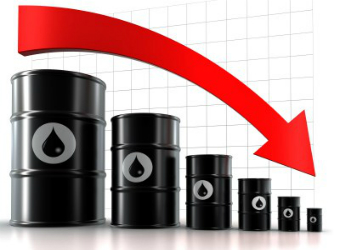The dollar rose on Friday after the monthly jobs report surpassed expectations, showing the United States added 200,000 positions. Wages also registered the biggest one-month gain since the end of the Great Recession in mid-2009.
A stronger greenback makes dollar-denominated commodities like crude oil more expensive to holders of other currencies.
U.S. West Texas Intermediate (WTI) crude ended Friday’s session down 35 cents at $65.45 a barrel. At its session peak, it hit $66.30, not far from a recent three-year high of $66.66.
Brent futures, the global benchmark, fell $1.19, or 1.7 percent, to $68.46 a barrel by 2:33 p.m. ET. It traded as high as $70.02 earlier in the session.
Earlier this week, the U.S. Energy Information Administration reported that U.S. crude production topped 10 million barrels a day in November, the first time it has surpassed that level since 1970.
The U.S. oil rig count, a weekly measure of how many rigs drillers are operating, increased by six this week to a total of 765, Baker Hughes reported.
“Oil prices have come under pressure because of rising oil production in the U.S., together with a marginal rebound in the U.S. dollar index. The price is currently in overbought territory, which has also promoted profit taking,” said Abhishek Kumar, senior energy analyst at Interfax Energys Global Gas Analytics in London.
The once-strong connection, where oil rises when the dollar falls and vice versa, ebbed between 2014 and 2016, when a three-year supply glut caused the relationship between the two assets to break down.
With supply tightening, the relationship has reasserted itself. Since the beginning of the year, oil and the U.S. dollar index have had a correlation of -0.86, with -1 being a perfectly inverse relationship.
Oil prices had earlier been supported by strong compliance with output cuts by OPEC and its ally Russia, as well as expectations for strong demand growth in 2018.
January production from the Organisation of the Petroleum Exporting Countries rose from an eight-month low, according to a Reuters survey. Russian data showed strong compliance with output cuts in January, even as production hit 10.95 million bpd.
“The OPEC/non-OPEC production and U.S. tight oil have justifiably been a focus this year. Yet demand has quietly underpinned the tightening of the market over the past year,” Jon Rigby from UBS said in a note.
Global oil demand rose by 1.6 million bpd, or about 1.5 percent, last year and UBS said it should grow by another 1.3 million this year.
Goldman Sachs recently raised its 2018 forecast for oil demand growth to 1.86 million barrels a day from 1.73 million barrels a day.
On Thursday, it introduced its 2019 demand forecast at 1.6 million barrels a day but said economic growth around the world means consumption could be even stronger.


